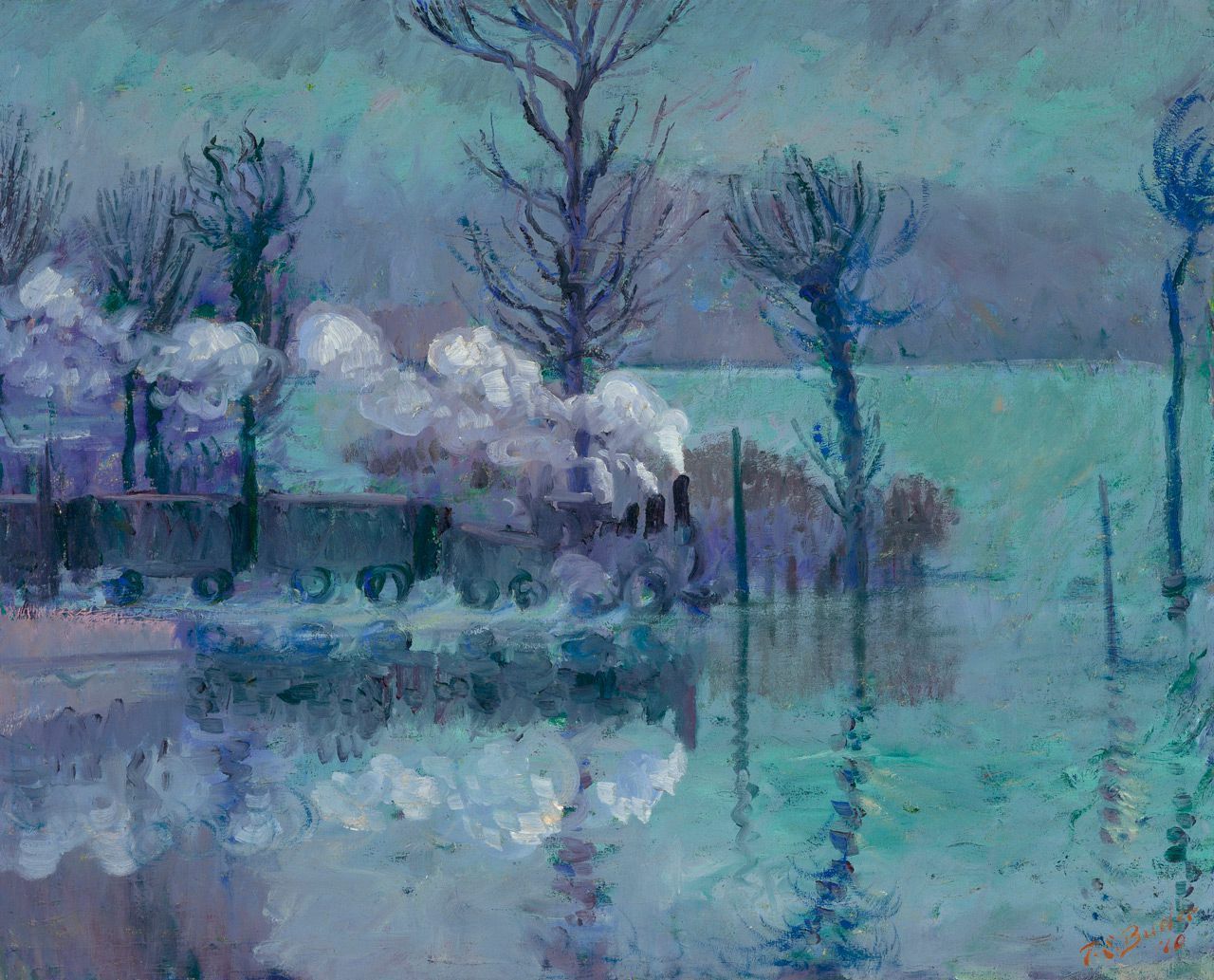Note
User Text: Theodore Butler’s painting styles included Impressionism, Post-Impressionism, Pointillism, and a simplified, flattened approach related to the French Nabis. At times he embraced the color and dynamic brushwork of the Fauves. Born in Columbus, Ohio, Butler became familiar with Impressionism in 1883 at the Art Students League in New York City, where he studied with William Merritt Chase. He then went to Paris, training at the Académie Julian, the Académie Colarossi, and the Académie de la Grande Chaumiere. He also took lessons from Carolus Duran and exhibited in the Paris Salon.
In the summer of 1888, Butler was among the first generation of American artists to visit Giverny. American painters went to Giverny eager to be in the proximity of Claude Monet, but most had little contact with him. Butler was different. He became intimately acquainted with Monet, painted alongside him, and married his step-daughter, Suzanne Hoschedé. When Suzanne died in 1899, Butler married her sister Marthe.
Butler painted mainly in Giverny but traveled throughout France and to the United States for subject matter. He contributed to important shows in France, was a member of the Salon des Independents and the Salon d'Automne in Paris. He was a founding member of the Society of Independent Artists in New York. His visits to New York resulted in some of the first truly modern depictions of the state’s landscape. Giverny, however, remained his home, and he was a guiding force in the American and English art colony there until his death.
